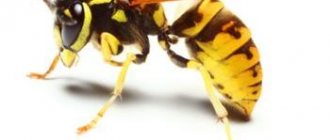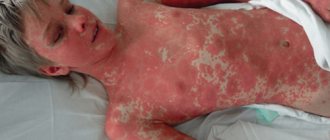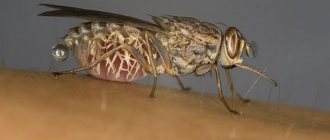Hand-foot-mouth syndrome is a highly contagious viral disease. The typical presentation is a vesicular rash on the arms (palm) and legs (affecting the foot) and the presence of aphthous lesions in the oral cavity.
As a rule, hand-foot-mouth syndrome (an enteroviral disease) occurs in children (the typical patient is a child under 5 years of age - 95% of cases), but sometimes it can also occur in an adult. This disease is usually characterized by a short-term course and benign quality. However, in some cases, serious neurological complications may also occur. An increased risk of these complications is present in children under 3 years of age. These include:
- Meningitis.
- Encephalitis affecting the brain stem.
- Peripheral paresis (poliomyelitis).
- Neurogenic pulmonary edema.
Rarely, the disease can even lead to death. The infection can have more serious consequences in women in the first trimester of pregnancy, when there is a risk of miscarriage.
Hand-foot-mouth disease has recently experienced a resurgence, despite the fact that it has not shown signs of existence for a long time. Although the numbers regarding the number of diseases are growing, they are not dramatic, and there is no need to fear an epidemic yet. Despite the unpleasant symptoms, treatment is usually effective.
This disease affects children in particular. The most at-risk group includes children aged 1-4 years. But, of course, the disease can also occur in an older child. This is a viral disease, which, as already mentioned, affects the arms, legs, mouth; Coxsackie infection (virus - enterovirus) is the culprit of the disease.
What initiates the disease and is it so dangerous?
Observed primarily in young children with a peak incidence in spring and autumn (due to increased temperature or air humidity), the infectious process is initiated:
- Coxsackie virus;
- enterovirus 71;
- a less significant group of enteroviruses.
Particularly distinguished from the whole variety of enteroviruses is the Coxsackie species (from the picarnovirus family), which has 29 serotypes of groups A, B and C, and is most significant not only for the occurrence of hand-foot-mouth syndrome, but also serves as the causative agent of aseptic meningitis. The most dangerous serovars are Coxsackie A5, A9, A16.
- As for enterovirus 71, its infectiousness is the lot of countries with extremely low sanitary standards; in Europe it has been practically eradicated as a species.
- The disease is of little relevance for adults, but for children, with their tendency to put everything they “get” into their mouths, it poses a serious danger.
- The risk of infection for both children and adults increases in the following cases:
- violations of food preparation rules (insufficiently long heat treatment or complete absence of it) or storage conditions;
- the existence of microdamages in the oral cavity.
- In the first case, the enterovirus infection, having multiplied in the intestines of the infected person (hence the name of the virus: enteros - intestines), spreads with the flow of biological fluids, in the second, the infection directly penetrates the mucous membrane.
- When bitten by bloodsucking insects, the pathogen enters directly into the blood of a previously healthy person.
- Just like any intestinal infection, enteroviral vesicular stomatitis is a “disease of unwashed hands” when the fecal-oral mechanism of infection occurs when caring for domestic animals and livestock (less often when working with contaminated laboratory material).
- The virus can also be transmitted by airborne droplets from a sick person to a healthy person and through contact (through contaminated objects).
Hand-foot-mouth disease
The name of this disease comes from the English Hand, Foot, And Mouth Disease, HFMD
What you need to know about Hand-Foot-Mouth DiseaseHand-Foot-Mouth Disease (HFMD) is caused by the Coxsackievirus, a member of the enterovirus family. HFMD most often affects children under 10 years of age, but people of any age can get the infection. The disease is manifested by fever (high temperature), and red spots with blisters in the center. Most often, the rash with HFMD is located in the mouth (tongue, gums), arms and legs (hence the name of the disease),
but it can also affect the buttocks, especially the perianal region, and manifest as single elements on any part of the body. Typically, HFMD lasts about 10 days, with an increase in incidence usually occurring in the fall. Your child cannot get HFMD from animals.
Treatment of hand-foot-mouth disease There are no antiviral drugs that can suppress enteroviruses. The body copes with this disease on its own. The essence of treatment is to relieve the child’s symptoms, prevent dehydration and identify complications.
Medicines You can give your child medications such as ibuprofen or paracetamol to reduce fever and relieve mouth pain. Talk to your doctor about the optimal dose and method of administration.
NB! Never give your child aspirin without a doctor's permission - as aspirin provokes the development of an extremely serious disease - Reye's syndrome. There are recommendations for the use of lidocaine gels for local anesthesia of ulcers and inflammation in the mouth.
Treatment options
Once the diagnosis is confirmed, the doctor draws up a treatment plan. It includes:
- drug therapy to alleviate the baby’s condition;
- local remedies to eliminate itching and anesthetize rash sites;
- nutrition correction.
There are no special drugs that treat acute vesicular stomatitis. The doctor prescribes a gentle diet that excludes pickles, hot and sour foods, and drinking plenty of fluids for detoxification. Liquid and pureed warm food that does not irritate the oral cavity is recommended as food.
The following medications are also prescribed:
- antipyretics with ibuprofen or paracetamol: Nurofen, Panadol;
- antihistamines: Zodak, Erius, Fenistil;
- local anesthetics for the oral cavity: Lidocaine Asept, Kamistad;
- antiviral agents: oxolinic ointment, tebrofen ointment;
- for healing vesicles on the palms and soles: Imudon, Karolitin, Propolis spray;
- Chlorphyllipt oil solution for treating mouth ulcers.
If there is discomfort and pain in the mouth, you can help your baby using folk methods - rinse the mouth with a warm decoction of chamomile or sage and treat mouth ulcers with sea buckthorn oil.
During the acute period, exposure to the sun should be avoided. The rash goes away without a trace within 7-10 days. However, at high temperatures, the child’s condition should be monitored by a doctor. This will help adjust treatment and avoid possible complications.
Diagnosis of herpangina
Usually no additional diagnostic methods are required; the doctor makes a diagnosis based on a physical examination and medical history.
Treatment See treatment of hand-foot-mouth disease. The illness usually goes away within a week.
Possible complications
In both hand-foot-mouth disease and herpangina, the main complications are dehydration and aseptic meningitis. Therefore, you should closely monitor your child for signs of dehydration and headache levels, and if you suspect complications, contact your doctor immediately.
Complications are quite rare; most children recover within 10 days.
During a child’s illness, all family members must observe the most thorough hygiene: separate dishes into individual dishes, and often wash their hands and treat them with antiseptics.
Source.
Treatment of enteroviral vesicular stomatitis
If the disease manifests itself, it will have to be treated. Treatment of the disease is usually nonspecific. If a person is diagnosed with enteroviral stomatitis with exanthema, the sick child or adult can, firstly, contact a dentist (dentist), who will most likely prescribe interferon, and secondly, this measure must be supplemented with the following techniques:
- the affected areas should be lubricated with brilliant green (its scientific name is brilliant green solution);
- the patient should take vitamins, since their lack significantly reduces the immune system and can become an additional cause of stomatitis (the vitamin complex is prescribed by a specialist, but special attention should be paid to vitamins A, C, as well as all B vitamins);
- ensure that the diet provides a person not only with all the necessary vitamins, but also with iron, selenium and other necessary substances;
- adequate pain relief if the ulcers and vesicles are very painful;
- drink plenty of fluids, as water removes viral waste products from the body.
In addition, if a person is tormented by enteroviral vesicular or any other stomatitis, you can use tinctures of calendula and chamomile, which soothe the skin and promote the healing of microtraumas, ulcers, and vesicles. Also, treatment of enteroviral vesicular stomatitis (and it is mainly aimed at antiviral therapy combined with symptomatic therapy) is carried out using various ointments and creams.
The mouth is rinsed with alcohol tinctures and herbal decoctions or hydrogen peroxide. It is also good if there is a lot of garlic in the patient’s diet, since its juice promotes the healing of ulcers and vesicles. In some cases, doctors may prescribe medications designed to combat allergies. The fact is that sometimes the causes of stomatitis can be combined.
Enteroviral stomatitis occurs in 10% of adults and occurs when an enterovirus enters the body. The disease manifests itself as inflammation of the oral mucosa, rashes in the mouth and on the extremities, and fever. Animals, especially cattle, get sick and carry the virus.
The vesicular stomatitis virus is located and multiplies in the gastrointestinal tract, but rarely affects the organs of the digestive system. The causative agent is the Coxsackie virus and enterovirus 71, which are members of the picornavirus family. They are durable in the external environment and can exist for up to 2 weeks at room temperature.
Antiviral drugs for the treatment of enterovirus
The attending physician will also prescribe antiviral therapy. For this purpose, the following drugs are prescribed:
- Oxolinic ointment. Inexpensive and relatively effective remedy. However, in most cases it is used as a preventive medicine that helps fight not only enterovirus, but also other pathogenic microorganisms.
- Tebrofen ointment. An external antiviral medication provides comprehensive treatment, actively fighting the inflammatory process and helping affected tissues heal faster.
In most cases, despite the fact that patients do not seek medical help, recovery occurs fairly quickly.
In the normal course of the disease, therapeutic measures may not be required at all. Without any serious intervention, the sores go away on their own after a few days. However, at high temperatures one cannot do without the use of antipyretic drugs.
Causes of the disease
Enteroviral vesicular stomatitis occurs rarely in adults. Children get sick more often. The disease manifests itself under the complex influence of factors: reduced immunity and the entry of the virus into the body. The risk group consists of people with immunosuppression: patients after organ transplantation, with malignant tumors, VIL-infected. Persons in contact with sick animals are also susceptible to the disease: farm workers, laboratories, veterinarians.
Traditionally, the following routes of infection have been identified.
- Contact. The virus can enter the body from a sick person through household items, hygiene products, or from a sick animal when caring for it.
- Airborne. It is transmitted through the air when talking with a carrier of the virus, sneezing or coughing of a patient.
- Fecal-oral. When the virus comes from animal manure, which is used for fertilizer.
- Food. The pathogen can be contained in vegetables, fruits or in unboiled milk from a sick cow or goat.
- Very rarely, the virus can be transmitted through insect bites.
The incubation period of the disease lasts from 2 to 10 days. The first signs of the disease will be weakness, general malaise, and headache. It is also possible to increase body temperature and cause lymphadenitis. Next, a specific rash appears - vesicles, which are bubbles with transparent contents. Vesicles are localized in the oral cavity, on the arms, legs, and sometimes on the buttocks.
The appearance of rashes in the oral cavity is enteroviral vesicular stomatitis with exanthema. At the same time, grayish blisters with serous contents appear on the mucous membranes of the cheeks, gums, lips, and tongue, which have a rim of hyperemia around them. Less commonly, rashes can occur around the mouth, nose, and oropharynx. The lesions are painful, sometimes itching is present, and salivation increases. In this regard, difficulties arise while eating and brushing teeth, and bad breath appears.
Common manifestations of stomatitis in adults are headaches and muscle pain, fever, weakness, loss of appetite, nausea, vomiting, diarrhea, runny nose, and discomfort. Vesicular rashes appear on the soles and palms. After 3-6 days, the formations open with the formation of erosions.
Prevention
You should avoid contact with carriers of the virus and visiting crowded places in the autumn-spring period. A complete diet with an abundance of vitamins, vegetables and fruits, hardening, proper drinking regimen, and moderate physical activity are important. You should keep your child's room clean, wash toys and potty frequently, and change diapers regularly.
It is important for parents to teach their child to wash their hands before eating and wean them from the habit of biting their nails. It is necessary that he has his own towel, washcloth, dishes, and cutlery. Parents whose baby is sick with vesicular stomatitis should take a course of immunomodulators. Paying attention to the issue of hygiene and strengthening the immune system will minimize the risk of disease transmission.
Causes of hand-foot-mouth syndrome
Hand-foot-mouth syndrome is caused by viruses belonging to the genus (group) of enteroviruses, which include polioviruses, coxsackieviruses, echoviruses and other enteroviruses:
- Coxsackievirus A16 is generally the most common cause of hand-foot-mouth syndrome, but other coxsackieviruses can also cause the disease.
- Enterovirus 71 has also been associated with cases and outbreaks, primarily in children in East and Southeast Asia. Less commonly, enterovirus 71 is associated with severe illness such as encephalitis.
Several types of enteroviruses can be identified in outbreaks, but in most cases only one or two enteroviruses are detected.












